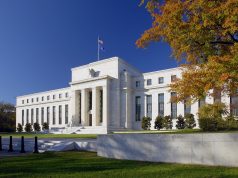8Basel III
Basel III is an international regulatory framework for Banks. It was established after the Lehman Brothers collapse in 2008 which resulted in a global financial crisis.
Established: 2010 – 2011
Purpose: To strengthen regulation, supervision and risk management of the banking sector.
Key Ratios:
- Capital Requirements: Common Equity Tier 1 (CET1) ratio equal or above 4.5% and 7% (Effective 2019)
- Leverage Ratio: Equal or above 3%
- Liquidity Ratio: Liquidity Coverage Ratio & Net Stable Funding Ratio
Tier 1 Capital is a measurement of financial strength form regulator’s point of view. Tier 1 Capital refers to common stocks, retained earnings and non-redeemable non-cumulative preferred stock.
Basel III is an enhancement of Basel I and Basel II.
Website: www.bis.org/bcbs/basel3.htm
7History of Basel
In late 1974, the Basel Committee on Banking Supervision (BCBS) was formed by G-10 nations as a body of Bank for International Settlements (BIS).
On 26th June 1974, a number of banks had released payment of Deutsche Marks to Herstatt Bank in Frankfurt in exchange for US Dollars that were to be delivered in New York.
Herstatt Bank was forced into liquidation 26th June 1974 before New York is open for operations for the day. As a result, the counterparty banks did not receive their USD payments.
The failure of Herstatt Bank highlighted the risks in international settlements, resulting in the formation of the Basel Committee on Banking Supervision (BCBS).
6Basel Committee on Banking Supervision (BCBS)
BCBS is an informal forum to enhance understanding of key banking supervision, policies and standards. It is set up under the guidance of Bank for International Settlements (BIS).
Established: 1974
Website: http://www.bis.org/bcbs
5Basel I
Established: 1988
Purpose: Establish minimum capital requirements for Bank with primary focus on credit risk and appropirate risk-weighting or assets.
4Basel II
Established: 2004 (Initial)
Purpose: Establish risk and capital management requirements to ensure that a bank has adequate capital for the risk the bank exposes itself through its lending, investment and trading activities.
In 2008, the collapse of Lehman Brothers resulting in the global finanicial crisis affected the full implementation of Basel II. Negotiations on Basel III began.
3Bank for International Settlements (BIS)
Established: 17th May 1930
Headquarters: Basel, Switzerland
Purpose: To serve central banks in their pursuit of monetary and financial stability, to foster international cooperation and to act as a bank for central banks.
BIS was orignally intended to faciliate reparations imposed on Germany by the Treaty of Versailles after World War I.
Website: http://www.bis.org
2FATF
Financial Action Task Force on Money Laundering
An intergovernmental body set up to combat money laundering
Founded: 1989
Headquarters: Paris, France
Purpose: Combat money laundering and terrorism financing
- AML Anti-Money Laundering
- TF – Terrorism Financing
FATF was set up to study money laundering trends, monitor and establish recommendations to combat money laundering. In 2001, terrorist financing was included following the September 2011 attack on World Trade Center in New York City.
Website: http://www.fatf-gafi.org
1FATCA
Foreign Account Tax Compliance Act
Effective: 18th March 2010
What is FATCA?
FATCA is a United States federal law requiring all United States persons to provide all Non-United States financial accounts to the Financial Crimes Enforcement Network (FINCEN).
Non-United States financial institutions are required to search their records for suspected US persons and report the assets and identities to US Treasury.
Why FATCA?
The purpose of FATCA is to detect US Person that has used non-United States financial accounts that are avoiding taxation in United States. It also served as a channel to raise revenue for the government.
Website: http://www.treasury.gov/resource-center/tax-policy/treaties/Pages/FATCA.aspx





























